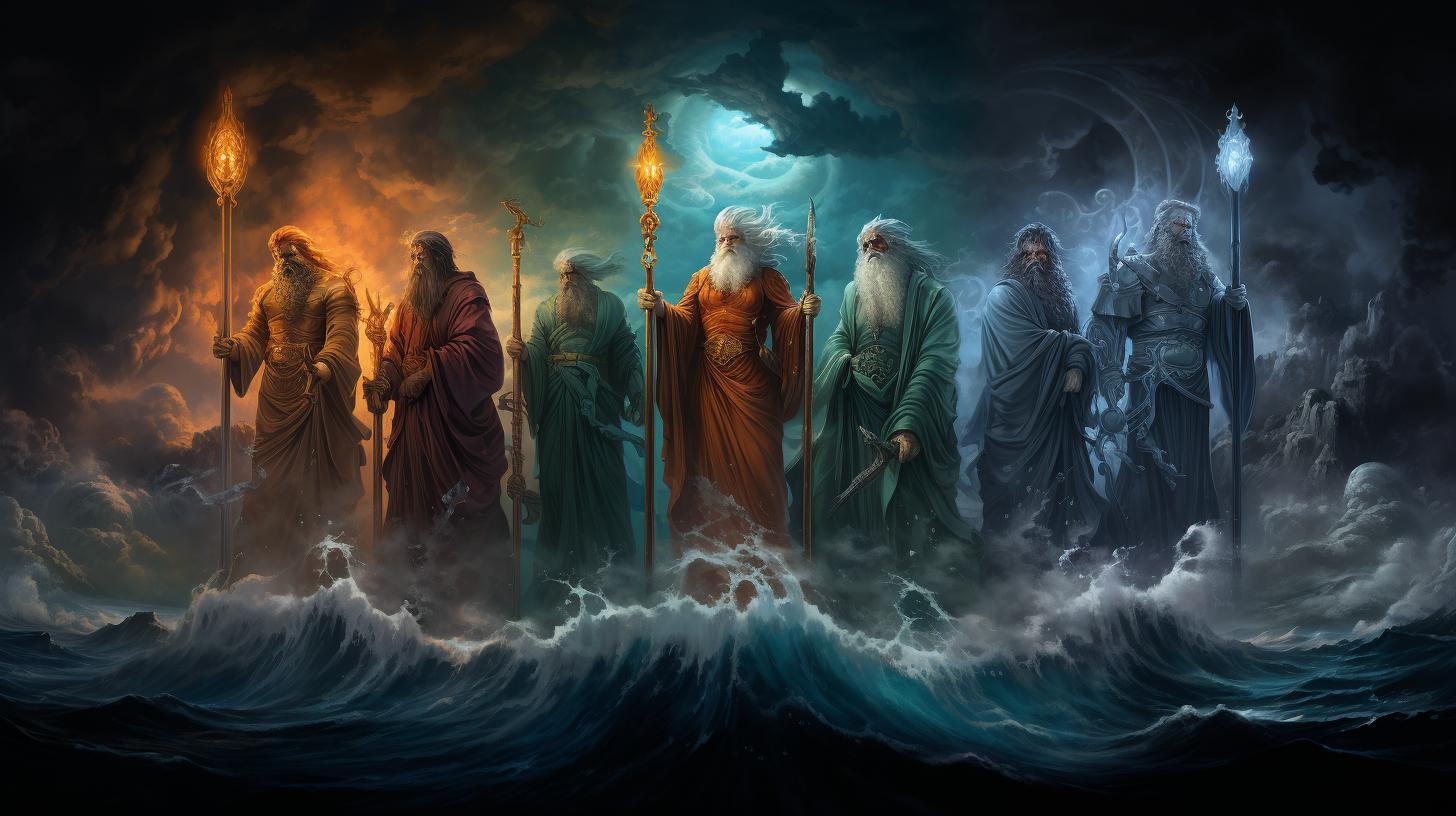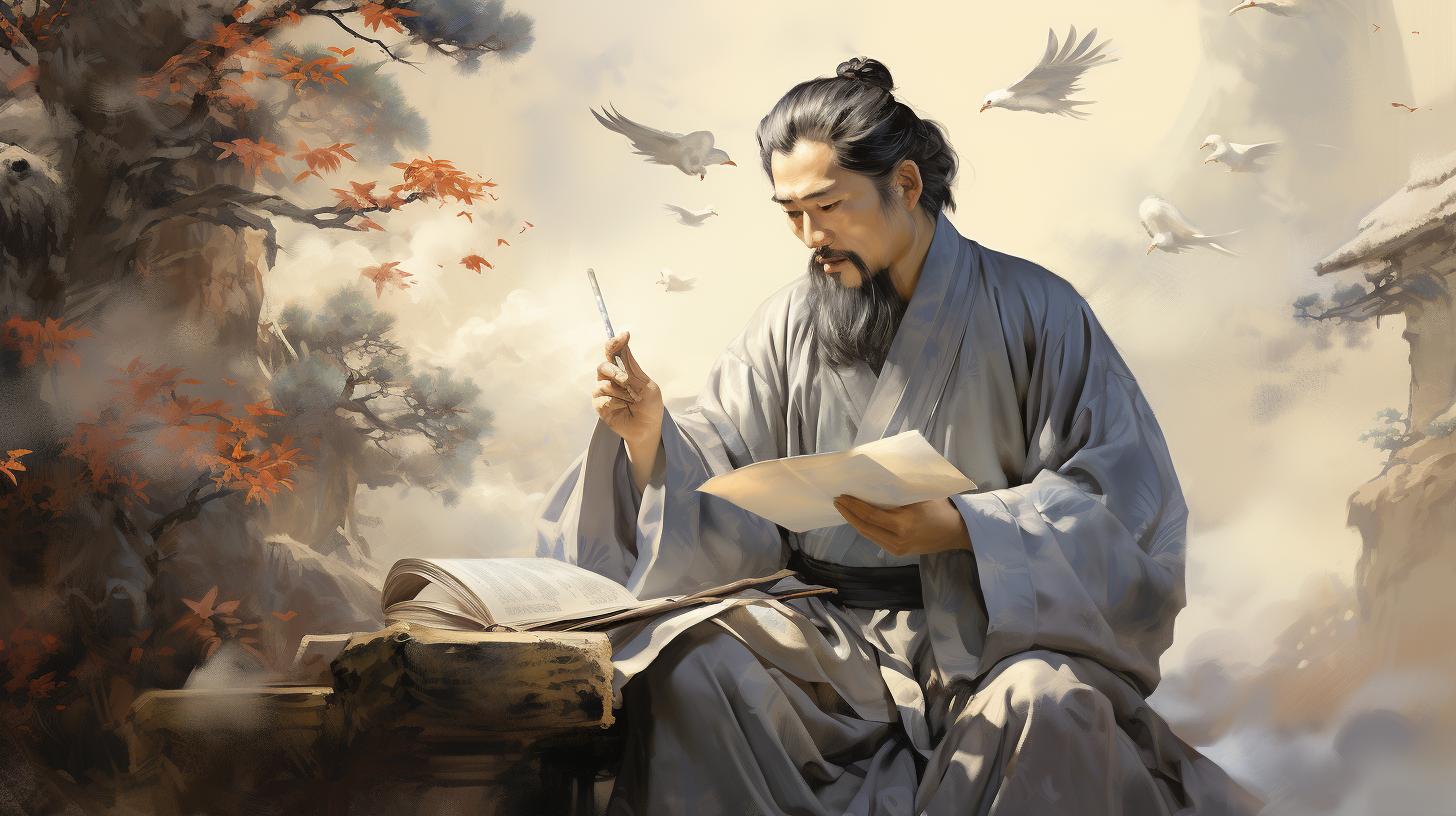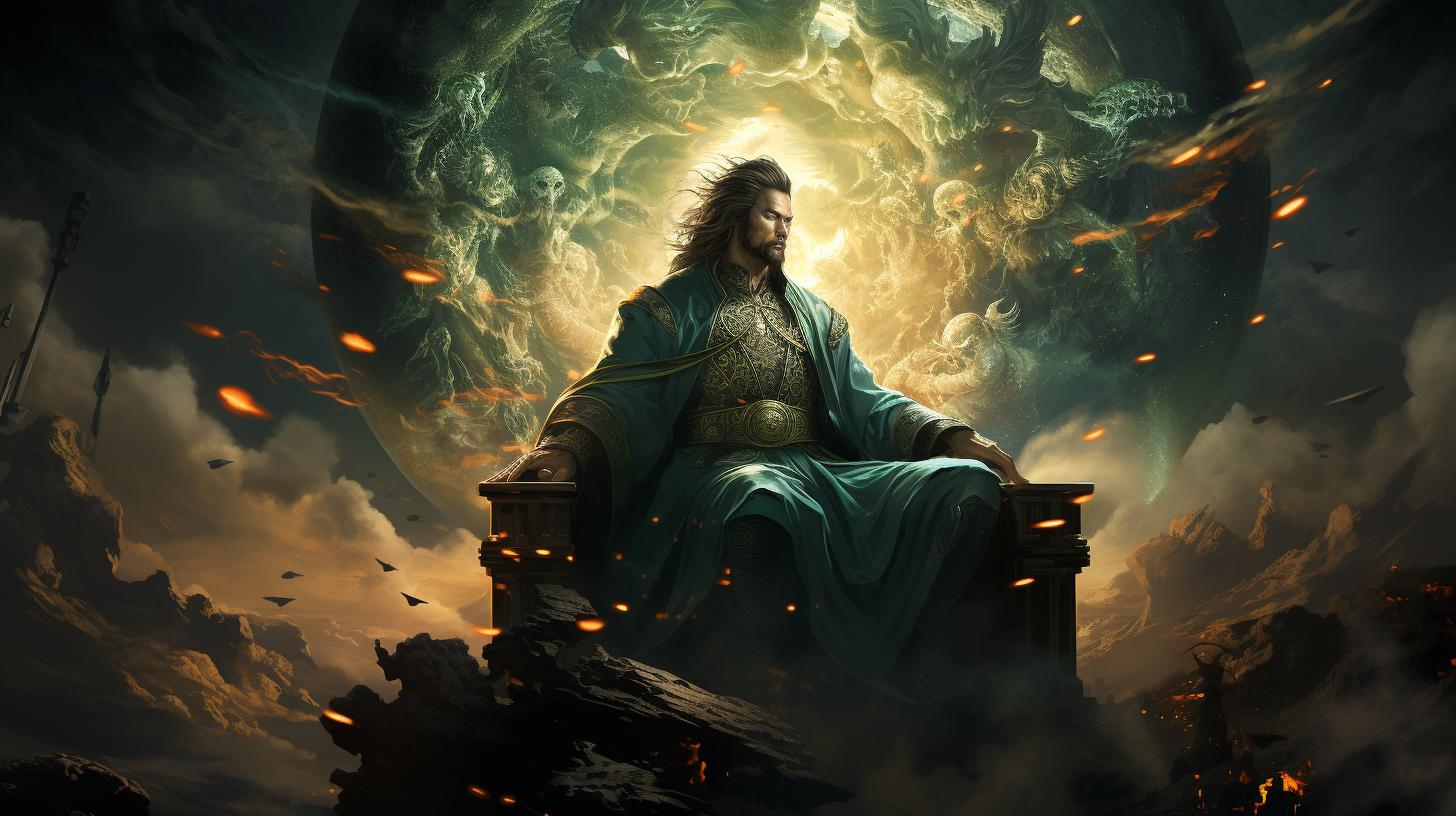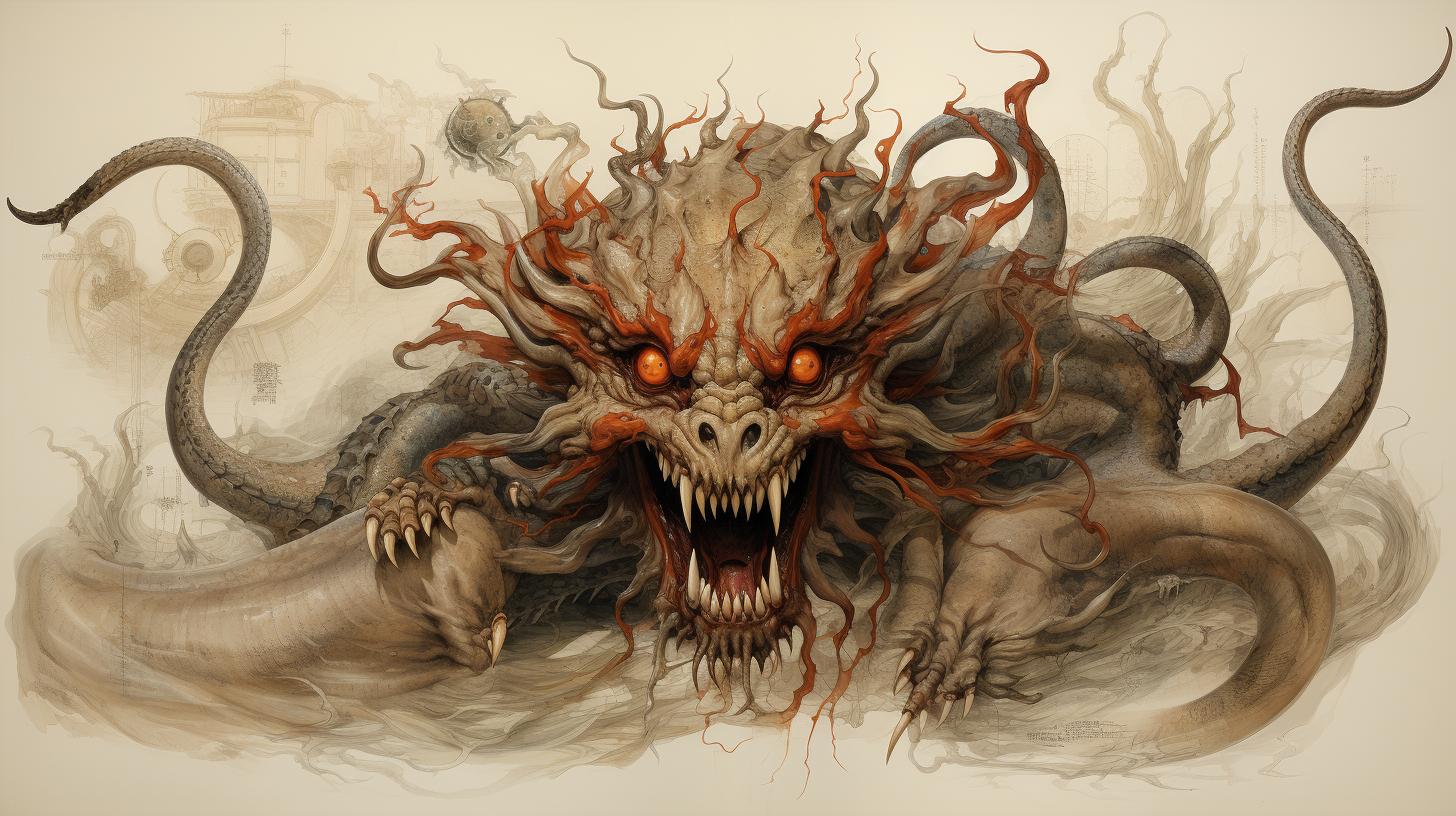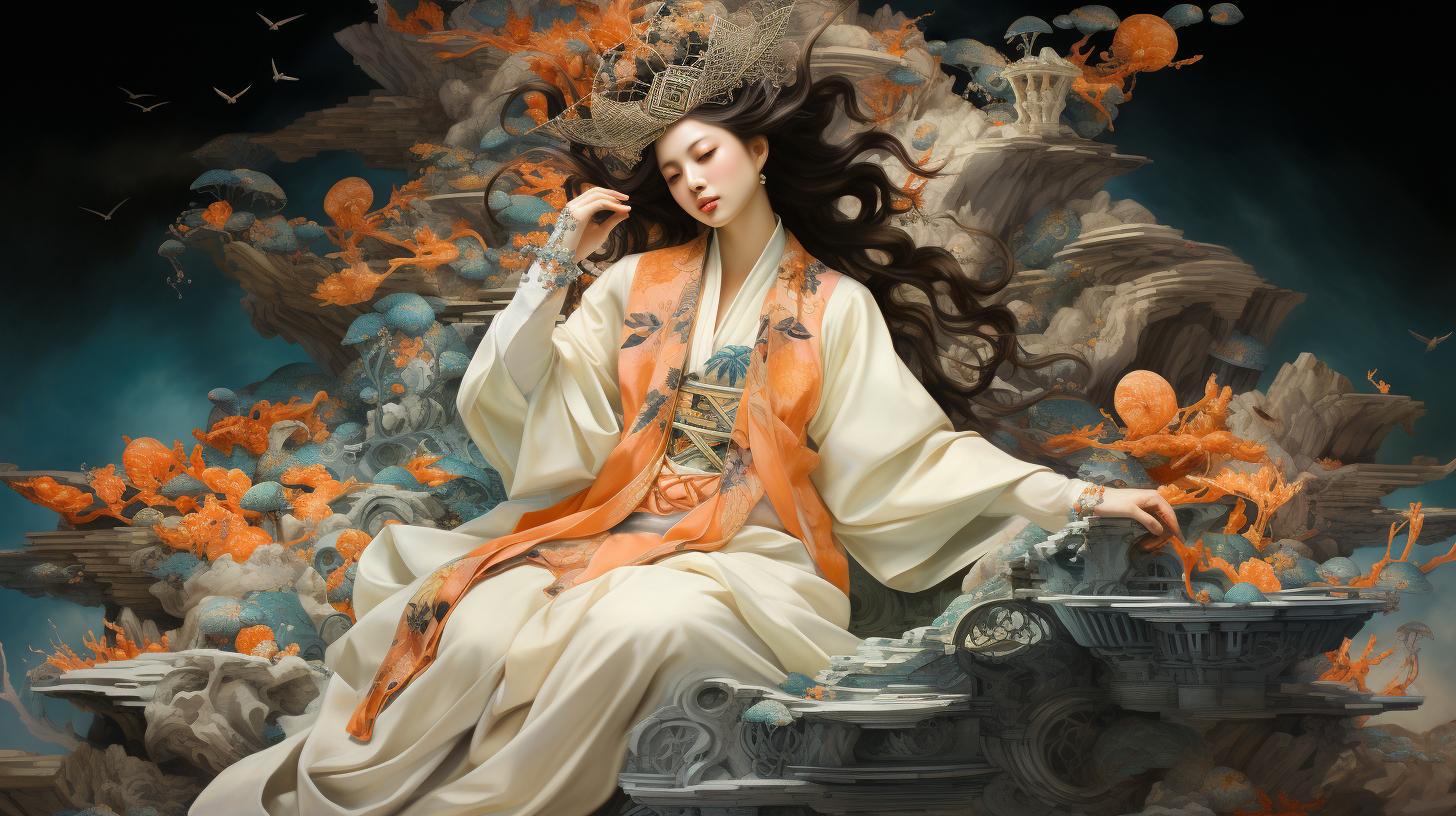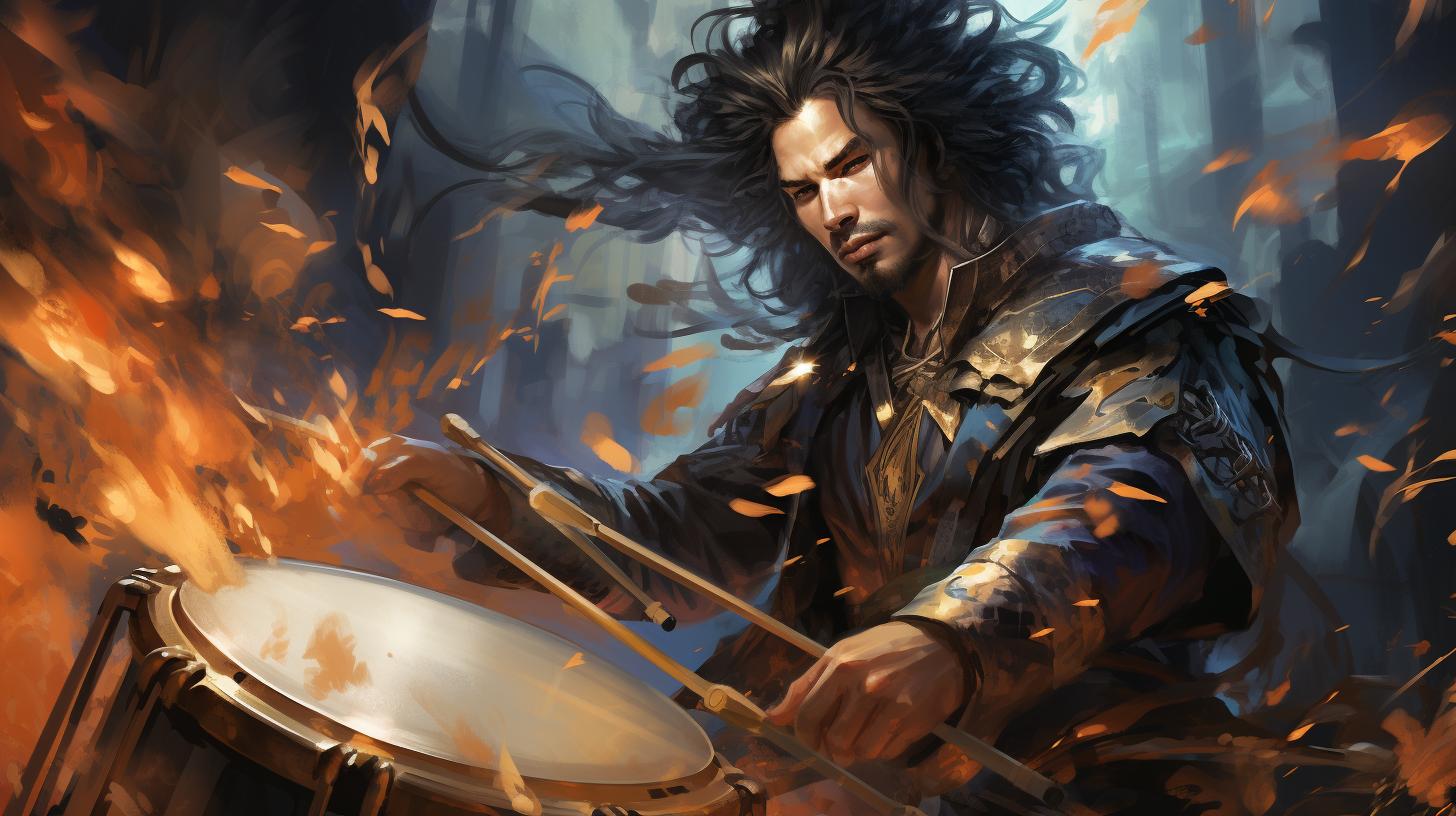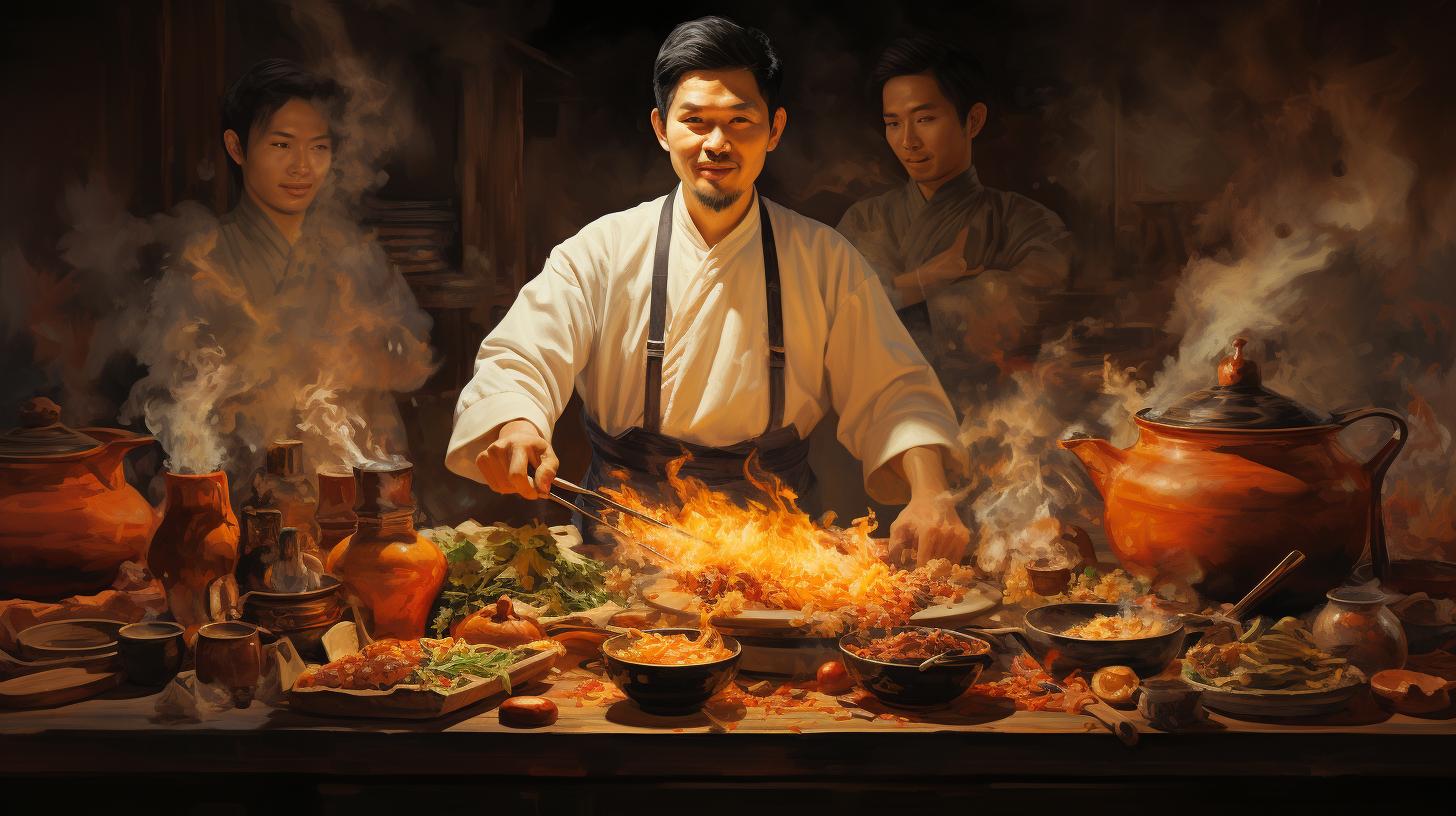‘Chinese Mythology: Exploring the Eight Immortals and Their Legends’

The Eight Immortals hold a significant place in Chinese mythology, with each possessing special powers to grant life or combat evil. Revered by Taoists and Chinese culture, these legendary xian are said to reside on five islands in the Bohai Sea.
From He Xiangu, the only female immortal, to Han Zhongli, associated with death and alchemy, each immortal brings unique attributes. Their stories have influenced art, literature, and even martial arts practices in China.
While other versions exist, the Eight Immortals remain the most recognizable and prominent figures in Chinese mythology.
The Eight Immortals in Chinese Mythology
The Eight Immortals hold a significant place in Chinese mythology, encompassing captivating origins, legendary tales, rich symbolism, and profound cultural significance. Their association with Taoist beliefs and practices further enhances their revered status.
Let’s delve into the intriguing world of the Eight Immortals and explore their remarkable presence in Chinese mythology.
Origins and Legends of the Eight Immortals
The origins of the Eight Immortals can be traced back to ancient Chinese mythology and folklore, primarily flourishing during the Tang and Song dynasties. Each immortal possesses unique attributes and is often accompanied by captivating legends that recount their extraordinary existence.
Symbolism and Significance in Chinese Culture
The Eight Immortals represent powerful symbols within Chinese culture, epitomizing ideals of prosperity, longevity, and spiritual enlightenment. Their individual traits and deeds serve as exemplary models for personal growth, moral virtues, and harmonious living with nature.
Taoist Beliefs and Practices Related to the Eight Immortals
- Devotees of Taoism hold the Eight Immortals in high esteem, considering them paragons of enlightenment and spiritual attainment.
- The immortals are believed to possess divine powers capable of bestowing life, healing ailments, and warding off evil.
- Rituals, ceremonies, and meditative practices associated with the Eight Immortals are undertaken by Taoist practitioners to seek spiritual enlightenment and longevity.
- The immortals’ teachings emphasize the importance of cultivating inner virtues, following the natural flow of life, and attaining harmony with one’s surroundings.
By exploring the origins, legends, symbolism, and Taoist beliefs of the Eight Immortals, we unravel an exquisite tapestry of Chinese mythology and unveil the profound influence these legendary beings continue to exert on Chinese culture and spiritual practices.
The Eight Immortals and Their Powers
The Eight Immortals, revered figures in Chinese mythology, possess extraordinary powers that have been attributed to their respective roles. Each immortal represents a unique aspect of Chinese culture and folklore.
He Xiangu: The Only Female Immortal
He Xiangu, the only female immortal amongst the group, is often depicted holding a lotus flower. She is associated with purity, beauty, and feminine energy. He Xiangu symbolizes endurance and resilience and embodies the power of healing.
Cao Guojiu: Immortality in the Song Dynasty
Cao Guojiu, associated with the Song Dynasty, attained immortality through his virtuous acts. He is often depicted in official attire, symbolizing his noble heritage. Cao Guojiu represents righteousness, loyalty, and good governance.
Li Tieguai: The Immortal Associated with Medicine
Li Tieguai, known for his exceptional medical skills, is instantly recognized by his iron crutch and gourd bottle. As the patron of physicians and healers, he represents compassion, selflessness, and the overcoming of physical limitations.
Lan Caihe: Patron of Florists and Gardeners
Lan Caihe, originally depicted as a woman but later as an androgynous figure, is associated with the artistic beauty of flowers and gardens. Lan Caihe symbolizes spontaneity, joy, and the harmonious coexistence of different genders.
Lü Dongbin: The Scholar and Poet Leader
Lü Dongbin, considered the leader of the Eight Immortals, is a renowned scholar and poet. As a symbol of wisdom and intellectual prowess, he embodies the ideals of self-discipline, enlightenment, and the pursuit of knowledge.
Han Xiangzi: The Flute Artist
Han Xiangzi, known for his extraordinary flute-playing skills, represents the arts and aesthetic pursuits. He exemplifies creativity, passion, and the transformative power of music. Han Xiangzi inspires individuals to express themselves through artistic endeavors.
Zhang Guolao: Symbol of Longevity
Zhang Guolao, often depicted riding a donkey backward, is the embodiment of longevity and vitality. He represents the importance of a balanced, healthy lifestyle and offers guidance on how to achieve lasting health and well-being.
Han Zhongli: Associated with Death and Alchemy
Han Zhongli, associated with the powers of alchemy, is believed to have the ability to create precious metals. Despite his association with death, he symbolizes transformation, rebirth, and the pursuit of spiritual enlightenment.
The Eight Immortals in Art, Literature, and Popular Culture
Explore the rich presence of the Eight Immortals in various forms of art, literature, and popular culture. From ancient and medieval art to modern films, TV shows, and video games, their enduring appeal has left a lasting impact.
Depictions in Ancient and Medieval Art
Ancient and medieval Chinese art showcases the Eight Immortals as prominent subjects. Paintings, sculptures, and other artwork depict their distinctive attributes and powers. The vibrant and colorful representations capture their mythical personas, offering insights into their revered status in Chinese culture.
Representation in Literature and Theater
The Eight Immortals have been central figures in numerous literary works, including poems, novels, and plays. These writings delve into their fascinating stories, exploring their adventures, teachings, and interactions with mortals.
The immortals’ presence in theater has also been significant, with their tales being adapted into captivating stage performances.
Influence on Qi Gong and Martial Arts
The legends of the Eight Immortals have influenced the development of practices such as Qi Gong and various styles of Chinese martial arts. By embodying the virtues and powers attributed to the immortals, practitioners seek to harness their energy, cultivate inner strength, and attain a state of harmonious balance.
The Eight Immortals in Films, TV Shows, and Video Games
The enduring popularity of the Eight Immortals has extended to the realm of popular culture. These legendary figures have made appearances in numerous films, television shows, and video games, captivating audiences with their unique abilities and captivating stories.
Their portrayal in modern media perpetuates their significance and keeps their traditions alive for new generations.
Other Versions and Similar Figures in Chinese Mythology
In addition to the famous Eight Immortals, Chinese mythology encompasses various other groupings of immortals and mythical figures. These alternative versions provide alternative perspectives and add depth to the rich tapestry of Chinese folklore.
Let’s explore some of these variations and related tales.
Different Groupings of Immortals in Chinese Mythology
- Four Great Immortals: This group consists of Zhang Guolao, Zhongli Quan, Lü Dongbin, and He Xiangu. They are revered as some of the most powerful immortals in Chinese mythology.
- Another Eight Immortals: Apart from the well-known Eight Immortals, there are other sets of eight immortals with varying names and attributes.
These variations reflect regional and cultural differences within China.
- Gods of Longevity: Longevity is a significant concept in Chinese culture, and there are numerous immortals associated with this theme, such as Shouxing and Xi Wangmu.
Related Tales and Myths Not Included in the Eight Immortals
Chinese mythology is replete with fascinating tales of gods, goddesses, and mythical creatures that play prominent roles alongside the Eight Immortals.
Some of these include:
- Fuxi and Nüwa: Mythical deities credited with creating humanity.
- Pangu: The divine being responsible for the creation of the world.
- Journey to the West: A legendary narrative that follows the adventures of the Monkey King, Sun Wukong, and his companions, which includes various immortals.
Exploring the Eight Immortals in Different Regions of China
China’s vast territory and diverse cultural traditions have led to regional variations in the depiction and worship of the Eight Immortals.
Some areas may have specific figures or stories closely associated with regional folklore, adding depth and diversity to the overall mythology.
- Taoist Influence: Taoist practices and beliefs have significantly shaped the worship and interpretations of the Eight Immortals across different regions of China.
- Regional Deities: Immortals or divine beings specific to certain provinces or cities hold prominence in local folklore and legends, often coexisting with the Eight Immortals.
- Localized Rituals: Each region may have its unique rituals, festivals, and ceremonies dedicated to the Eight Immortals, further highlighting their cultural significance within the local community.
Overall, the varying groupings of immortals, related tales, and regional interpretations add depth and richness to Chinese mythology.
They showcase the diverse spectrum of beliefs and cultural traditions that have evolved throughout China’s history.
Worship and Temples Dedicated to the Eight Immortals
Worship of the Eight Immortals holds great significance in Chinese culture and is deeply rooted in Taoist practices. This section explores the temples, festivals, ceremonies, and pilgrimages devoted to honoring these legendary beings.
Taoist Temples and Practices
Taoist temples play a significant role in the worship of the Eight Immortals. These sacred spaces serve as a place for Taoist rituals, prayers, and offerings to the immortals. Devotees visit the temples to seek blessings, guidance, and spiritual connection with the immortals.
Festivals and Ceremonies Honoring the Eight Immortals
- Taoist communities celebrate various festivals dedicated to the Eight Immortals throughout the year. These festive occasions feature vibrant processions, theatrical performances, and elaborate rituals.
- One of the most notable celebrations is the Birthday of the Eight Immortals, which falls on the seventh day of the lunar seventh month.
During this event, devotees pay homage to each immortal, offer incense, and participate in religious activities such as chanting and meditation.
- In addition, specific ceremonies are held to honor individual immortals, such as Cao Guojiu’s memorial day or Han Zhongli’s alchemical rituals.
Pilgrimages and Sacred Sites Linked to the Immortals
- Devotees undertake pilgrimages to sacred sites associated with the Eight Immortals to deepen their spiritual connection and seek blessings.
- Mount Penglai, located in the Bohai Sea, is considered the dwelling place of the immortals.
Many pilgrims visit this mountain in search of spiritual enlightenment and to pay homage to the immortals.
- Other sacred sites include temples dedicated to specific immortals, such as Li Tieguai and his temple in Hangzhou or Lu Dongbin’s shrine in Mount Zhongnan.
All these practices and rituals associated with the Eight Immortals continue to thrive, allowing individuals to express their devotion, seek spiritual guidance, and experience the rich cultural heritage of Chinese mythology.
Moral Teachings and Virtues Associated with the Eight Immortals
Within Chinese mythology, the Eight Immortals serve as embodiments of various moral teachings and virtues. Through their tales and portrayals, they offer valuable lessons for personal growth, spiritual development, and harmonious living with nature.
Generosity and Kindness as Immortal Virtues
One of the core virtues exemplified by the Eight Immortals is generosity. They are known for their selflessness and willingness to help others, emphasizing the importance of giving without expecting anything in return.
Each immortal demonstrates acts of kindness, whether it is Li Tieguai’s dedication to alleviating suffering or He Xiangu’s compassionate nature.
Living in Harmony with Nature: Lessons from the Immortals
The Eight Immortals are deeply connected to nature, symbolizing the principles of living in harmony with the natural world. Their stories teach us to appreciate and respect the environment, emphasizing the balance between humanity and the Earth.
Lan Caihe, as the patron of florists and gardeners, reminds us of the significance of caring for and nurturing plants and the natural world around us.
Influence on Personal Growth and Spiritual Development
The legends of the Eight Immortals serve as sources of inspiration for personal growth and spiritual development.
Their journeys and experiences reflect the trials and tribulations of life, reminding us of the importance of perseverance, self-discovery, and the pursuit of knowledge. The immortal Lü Dongbin, being a scholar and poet, embodies the pursuit of wisdom and continuous learning.
- Generosity and kindness are exemplified by the Eight Immortals, emphasizing selflessness and helping others.
- The Immortals’ connection to nature teaches the importance of living in harmony with the natural world.
- Their legends inspire personal growth, spiritual development, and the pursuit of wisdom.
Through these teachings, the Eight Immortals provide guidance for leading a virtuous and fulfilling life, reminding us of the values of generosity, kindness, harmony with nature, and continuous personal and spiritual growth.
.

